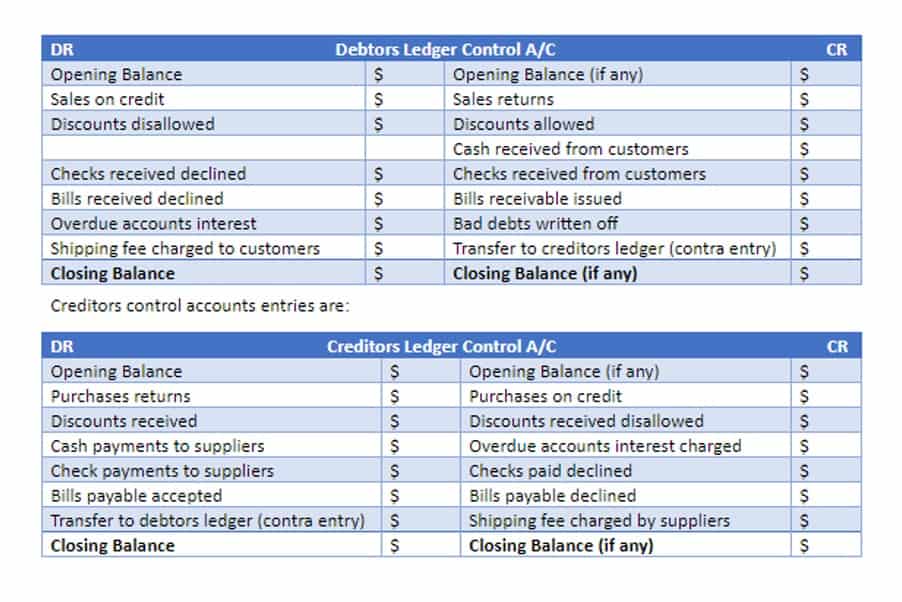14 1: Retained Earnings- Entries and Statements Business LibreTexts

Retained earnings are part of a company’s equity account and a debit to this account decreases the balance while a credit increases it. In order for the company’s financial books to balance, when a debit is made to the retained earnings account, a corresponding credit has to be made to another account. If a credit is made to the retained earnings account, a corresponding debit has to be made to another account. Retained earnings are displayed within a company’s financial statements, providing stakeholders with insight into profit accumulation and distribution. On the balance sheet, retained earnings appear as a line item within the https://satuonline.com/2022/01/27/another-word-for-bookkeeper-synonym-ideas-for/ Shareholder’s Equity section. Its presence underscores its role in demonstrating the owners’ stake in the company and ensuring the accounting equation remains balanced.

Are Retained Earnings Considered Cash?
The total amount realized by a company from the sales of goods or services rendered is its revenue. This amount includes all income that has been generated before the deduction of expenses and it is commonly referred to as gross sale. When the company is able to generate considerable revenue, it will be able to comfortably settle its expenses and other obligations while still having a considerable amount left over as retained earnings. The useful lifespan of an asset is the time it will take from its purchase to when it will no longer be efficient. The cost of the asset is then spread over the useful lifespan of the assets and accounted for as depreciation.
What Is the Difference Between a Certified and Cashier’s Check?
In this case, this debit balance of retained earnings will be presented as a negative in the balance sheet. Retained earnings are the portion of net income a company retains after paying dividends to shareholders rather than distributing all profits and covering all expenses, taxes, and other obligations. So, if you’re looking at a balance sheet and you see a credit balance in the Retained Earnings account, it means the company has accumulated earnings over Accounting Security its lifetime. A debit balance, on the other hand, would indicate that the company has accumulated net losses or has declared more dividends than its accumulated earnings. However, a debit balance in Retained Earnings is relatively rare and typically indicates financial distress. The company cannot utilize the retained earnings until its shareholders approve it.
Do You Capitalize Sales Tax on Fixed Assets?
Thus, retained earnings are credited to the books of accounts when increased and debited when decreased. If the balance of retained earnings is negative, then it is referred to as accumulated losses/deficit, or retained losses. The expense accounts have debit balances so to get rid of their balances we will do the opposite or credit the accounts. Just like in step 1, we will use Income Summary as the offset account but this time we will debit income summary.
How to Calculate Retained Earnings for a Business
- The double entry accounting system is based on the concept of debits and credits.
- Negative retained earnings, known as an accumulated deficit, indicate that a company has incurred more losses than profits over time.
- In partnerships, retained earnings are distributed among partners according to the partnership agreement.
- If a company’s earnings are negative, the company has incurred losses from its operations.
- This account increases with net income and decreases with net losses or dividend declarations.
- An alternative to the statement of retained earnings is the statement of stockholders’ equity.
Retained earnings normal balance is usually a credit, this indicates that the company has generated profits from its inception to the time when the retained earnings balance is checked. Since dividend payments are usually does retained earnings have a debit or credit balance deducted from a company’s retained earnings, the retained earnings balance of most companies is relatively low even if the company has a good financial standing. Thus, the retained earnings balance does not perfectly portray the level of success or profitability of a company. Instead, if a company’s success is to be analyzed, the various income statement ratios or business valuation methods could be used. They aid in ascertaining the profitability and value of a company respectively. A credit to the retained earnings account increases its balance, reflecting accumulated profits.

Retained Earnings in Business Structures

Each type of account has a “normal balance,” which is the side where increases are recorded. Assets increase with debits and decrease with credits, meaning their normal balance is a debit. Conversely, liabilities and equity accounts increase with credits and decrease with debits, thus holding a normal credit balance. Through these entries, the net income or loss earned during the period is formally incorporated into the Retained Earnings balance. The temporary revenue and expense accounts are reset to zero, ready for the next accounting cycle.

Understanding Account Types
- The income summary is a temporary account that is used to close the income and expenses of a company for each accounting period.
- This figure is not a cash balance but rather an accounting representation of earnings used to finance assets or reduce liabilities.
- When a business generates profits that are kept within the company, these earnings contribute to the balance of the retained earnings account.
- See how it’s a cumulative running tally of the corporate earnings and losses?
- In the long run, such initiatives may lead to better returns for company shareholders, rather than those gained from dividend payouts.
- Or a board of directors may decide to use assets resulting from net income for plant expansion rather than for cash dividends.
- Since the retained earnings account is an equity account, it has a credit balance.
In contrast, when a company suffers a net loss or pays dividends, the retained earnings account is debited, reducing the balance. For business accounting purposes, retained earnings are considered a credit balance account. The amount is credited with additional profits and is debited as a result of losses or dividend distributions. Retained earnings specifically accumulate the profits that a company has chosen to keep and reinvest for future growth or to strengthen its financial health, rather than distributing them to shareholders. Revenue accounts, which reflect income from primary operations, increase with a credit and decrease with a debit.

For example, a loan contract may state that part of a corporation’s $100,000 of retained earnings is not available for cash dividends until the loan is paid. In partnerships, retained earnings are distributed among partners according to the partnership agreement. This agreement outlines the proportion of profits (or losses) each partner is entitled to. Retained earnings in a partnership are not kept in the business as a separate entity; instead, they are allocated to each partner’s capital account.